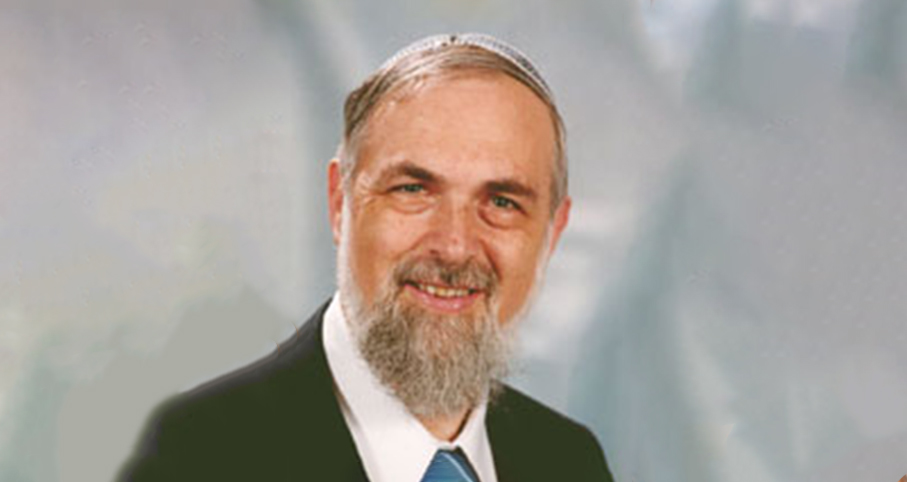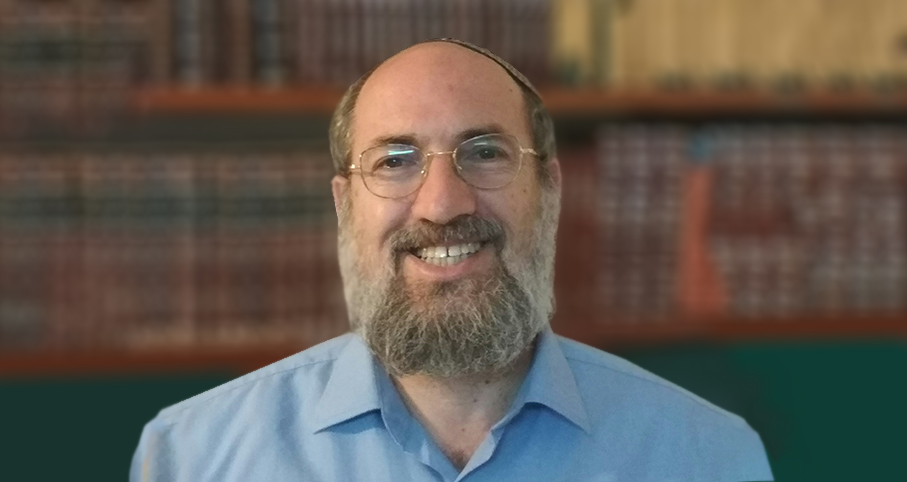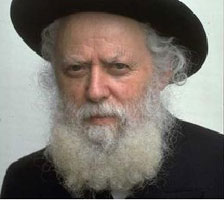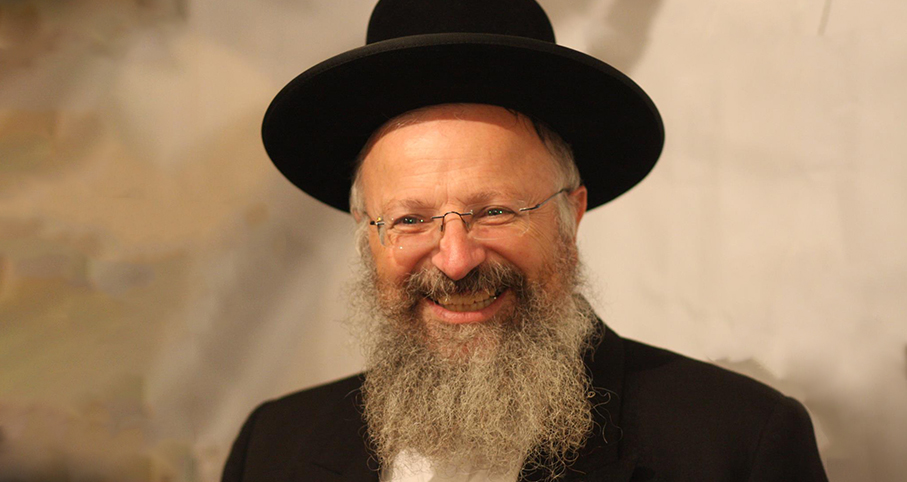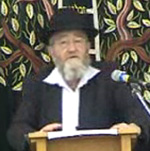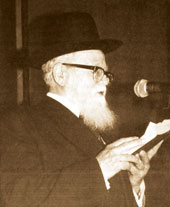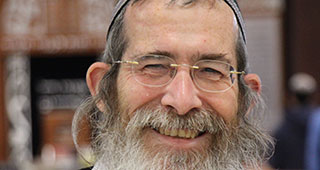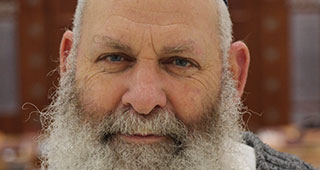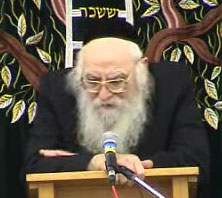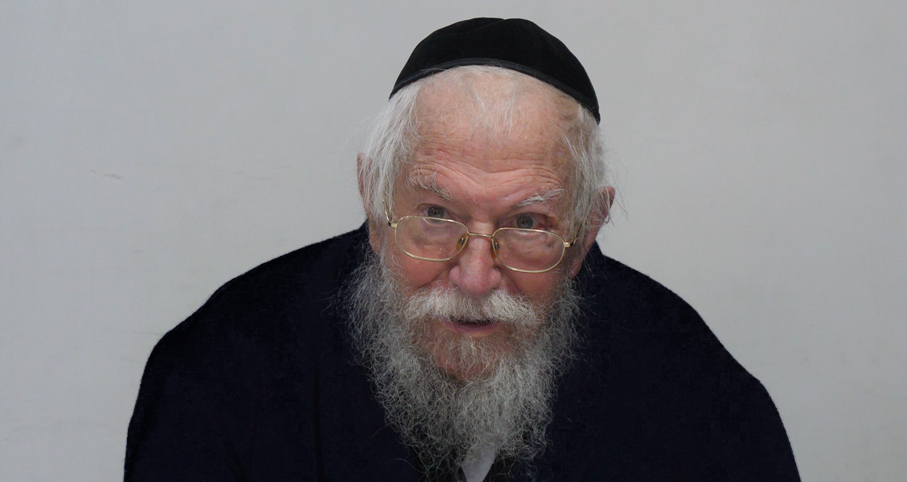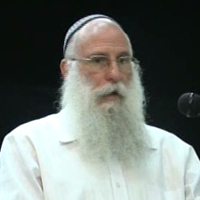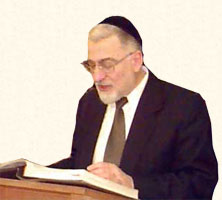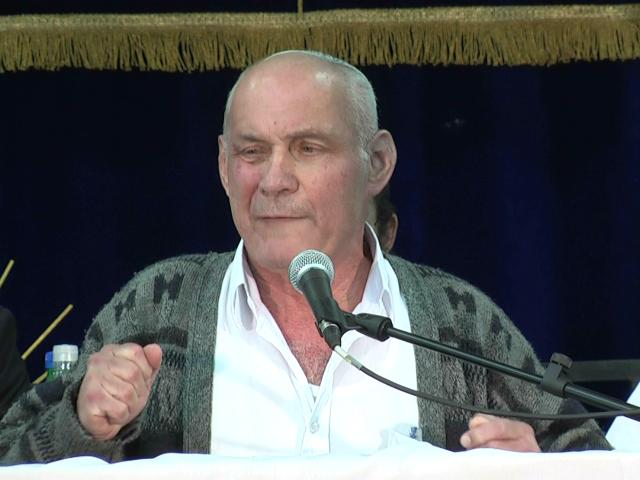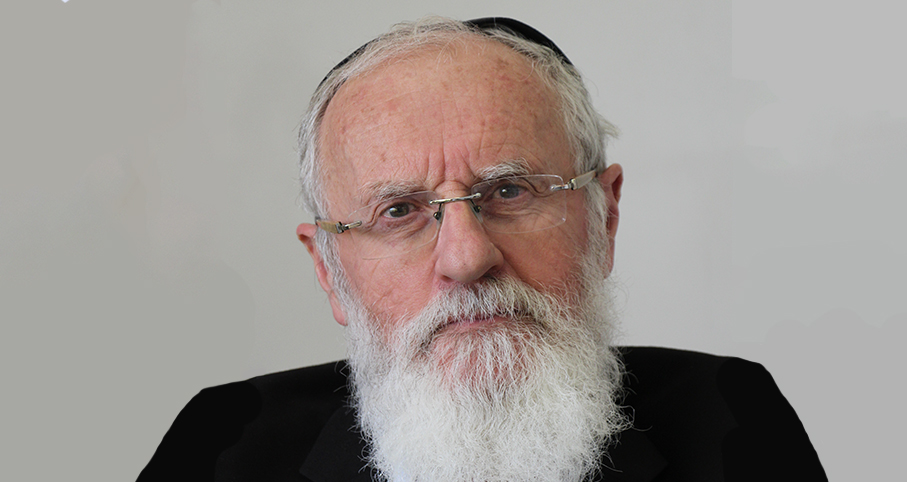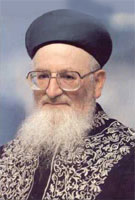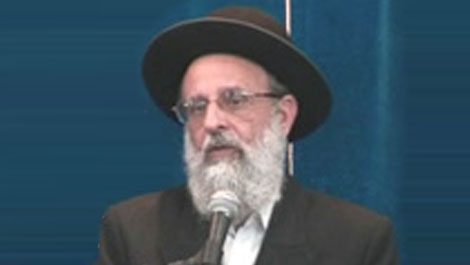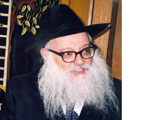Beit Midrash
- Library-Sifria
- Pninei Halacha
- Pesach
It is a Torah commandment to eat matza on the night of the fifteenth of the month of Nisan, as it says, "In the evening, you shall eat matzot" (Shemot 12:18). Even though the Torah also says, "you shall eat matzot for seven days" (Shemot 12:15), the Sages inferred, based on the rules for interpreting the Torah, that the Torah does not mean to command us to eat matzot all seven days, but rather that matza is the staple food that we eat on Pesaĥ instead of bread. However, one who wants to live off of fruits, vegetables, meat, and dairy products may do so.
The simple meaning of this is that one who eats matzot all seven days of Pesaĥ does not thereby fulfill a mitzva. This is what the Sages meant when they said (Pesaĥim 120a) that eating matza during the seven days is "voluntary" ("reshut"). Yet many leading halakhic authorities have written that although eating matza is obligatory only at the Seder, and indeed that is why the Sages instituted the special blessing over the eating of matza at the Seder only, nevertheless one who eats matza on the other days of Pesaĥ still fulfills a mitzva, even if it is not obligatory. In this view, the Sages referred to eating matza on the remaining days of Pesaĥ as a "reshut" only by way of contrast with the obligation to eat matza on the night of the fifteenth. According to this view, the verse "you shall eat matzot for seven days" retains its simple meaning. This is how Ibn Ezra and Ĥizkuni explained the verse, this is implied by a statement by Rosh, and this was the practice of the Vilna Gaon. However, even they maintained that the mitzva consists of eating a kezayit (olive’s bulk) of matza at each meal, and that eating more does not add to the mitzva. 1
2.Shmura Matza
The Torah states, "And you shall observe (u-shemartem) the matzot" (Shemot 12:17). The Sages interpreted this to mean that the matza must be guarded from becoming ĥametz. This refers specifically to the matzot eaten on the Seder night in fulfillment of the mitzva, for the very next verse states, "in the evening you shall eat matzot." The other matzot one eats on Pesaĥ are like any other food: they may be eaten as long as there is no concern that they may have become ĥametz. However, we have been commanded to guard carefully the matza used for the mitzva on Seder night from becoming ĥametz. Such matza is called "shmura" matza.
Ideally, the wheat that will be used for the matzot should be guarded from when it is harvested. It is customary to harvest the wheat while it is still a bit moist, for if it were to dry out completely and then get drenched by rain, it would become ĥametz. Similarly, later on the grains must be stored where they will not come into contact with water.
One may also fulfill the mitzva of eating shmura matza with matzot that were guarded from the time the wheat was ground into flour. As long as the wheat kernels showed no signs of becoming ĥametz and nothing has happened that would undermine the presumption that they are not ĥametz, one need not be concerned that they had become wet and became ĥametz. However, this is not the best kind of shmura matza since it was guarded only from the time of grinding.
In extenuating circumstances, when flour that has been guarded from the time of grinding is also not available, one may buy regular flour and fulfill the mitzva by guarding the dough from the time of kneading (SA 453:4). Even where it is customary to rinse grains of wheat lightly before grinding them, it is still permissible in extenuating circumstances to buy regular flour in the market, since a brief rinse is presumed not to be enough to cause the grains to become ĥametz. However, where it is customary to briefly soak the grains in water, one may not buy flour for matza in the market, since it is presumed to be ĥametz (MB 451:24). Therefore, in practice, one should not buy flour that is not certified kosher for Pesaĥ since the wheat is often soaked in water and may have become ĥametz. 2
In practice, today’s custom is to be scrupulous about shmura matza; matzot that have been guarded from the time of harvest are used to fulfill the mitzva of eating matza on the Seder night. This practice has taken root so thoroughly that people have come to call matza that has been guarded only from the time of grinding "non-shmura matza," even though it is considered shmura halakhically, and one may use it to fulfill the mitzva of eating matza.
3.Does the Guarding Have to Be with the Intent to Fulfill a Mitzva?
Guarding the matzot to be used for fulfilling the mitzva of eating matza on the Seder night has two implications: being extra vigilant to prevent it from becoming ĥametz and having the intention that the matza is to be used for the mitzva ("le-shem matzat mitzva"). It is therefore necessary that the matza be kneaded and baked by Jews who are halakhic adults, who can be relied upon both to guard against fermentation and to keep in mind that their actions are for the sake of matzat mitzva. One may not employ gentiles, minors, or mentally unfit workers to knead or bake matza, since they cannot be relied upon to have the proper intent (She’iltot, Rashba).
Some dispute the second implication above. In their opinion, the mitzva of guarding the matza requires extra vigilance to prevent the matzat mitzva from becoming ĥametz, but requires no special intent while doing it. Thus, gentiles and minors are fit to bake matzat mitzva, as long as an adult Jew supervises their work, ensuring that they work with alacrity and that the dough does not become ĥametz (Ra’ah).
In practice, at the time of kneading one should take care to fulfill both meanings of "guarding." Thus, one must insist that Jews knead and bake the matzat mitzva, taking care that the dough does not become ĥametz and intending that the matza be for the sake of the mitzva. However, at the time of harvesting and grinding, the first meaning is sufficient. Thus, the wheat may be harvested and ground by gentiles as long as a Jew stands nearby and supervises their work, ensuring that it does not become ĥametz (SA 460:1; MB and SHT 4 ad loc.). 3
Le-khatĥila, one should say out loud, when starting to work on matzot, that all the work is being done for the sake of producing matzat mitzva; be-di’avad, it is sufficient that he thought it (BHL 460:1, based on Pri Megadim). He should also have in mind that it is for the matzat mitzva that one eats on Seder night, but if he had in mind that it is for matza for Pesaĥ, he has fulfilled the obligation (SAH 453:14).
4.Handmade versus Machine-Made Matza at the Seder
A great dispute has raged among poskim ever since the invention of matza-baking machines. The dispute centers on two principal questions: 1) Is there indeed no concern that machine-made matzot may become ĥametz? 2) Can one use them to fulfill the mitzva of eating matza on the Seder night?
Concerning the question of ĥametz, it is agreed that everything depends on the nature of the machine and on its supervision. As long as there are kashrut supervisors who ensure that there is no risk of ĥametz, the matzot are kosher for Pesaĥ. Thus even the most pious and God-fearing Jews eat machine-made matzot on Pesaĥ.
The second question, however, is still debated. Some say that the mitzva of guarding the matza requires that the entire process of kneading and baking be done with explicit intent that they are le-shem matzat mitzva, and since a machine cannot have intentions, one would not fulfill the mitzva of eating matza on the Seder night with machine-made matza.
Most poskim maintain that one can fulfill the mitzva by eating machine-made matzot, for several reasons. Firstly, some explain that the mitzva of guarding the matza only requires one to ensure that it does not become ĥametz, and it is irrelevant whether this is done while making the matza by hand or by supervising the activity of a machine. Furthermore, a human being operates the machine, and if he operates it with the intent of making matzat mitzva, then automatically all of the machine’s operations are considered to have been done for the sake of the mitzva.
In practice, machine-made matza may be used to fulfill the mitzva of eating matza on the Seder night. Many are scrupulous about fulfilling the mitzva with handmade matzot that were baked under proper supervision, although even they concede that it is not necessary to eat handmade matzot throughout the Seder meal. Rather, they beautify the mitzva by eating handmade matza for those kezayit quantities that constitute the mitzva (see below 16:22-25). 4
^ 1.. Pesaĥim 120a explains this based on one of the rules for interpreting the Torah, namely, that any item singled out from a class of items did not leave the class to teach a new idea only about itself, but to apply the new teaching to the entire class. In this case, the "class" is "you shall eat matza for seven days." However, the Torah says later on, "for six days you shall eat matza, and the seventh day will be a festival for the Lord, your God" (Devarim 16:8). Clearly, the "seventh day" was excluded from the general class in that there is no mitzva to eat matza on that day. This in turn teaches about the entire class – all seven days – that there is no mitzva to eat matza. Only on the night of the fifteenth, the Seder night, is there such a mitzva, based on the verse "in the evening you shall eat matzot" (Shemot 12:18).
Most Rishonim and Aĥaronim do not mention any mitzva associated with eating matza during the seven days of Pesaĥ, implying that there is in fact no such mitzva. However, many Rishonim and Aĥaronim do actually mention such a mitzva, including: Ibn Ezra on Shemot 23:15, Ĥizkuni on Shemot 12:15, and Responsa Rosh 3:23 citing the Ge’onim that one does not wear tefillin on Ĥol Ha-mo’ed Pesaĥ, since there is already a "sign" on Pesaĥ, namely, eating matza. So states MB 475:45 in the name of Gra (Ma’aseh Rav §185). See Ha-Seder He-arukh I:78:7-14.
^ 2.. According to Rif, Rambam, and other Rishonim, the wheat needs to be guarded from the time it is harvested; according to Rosh, from the time that it is ground, since the mitzva only begins when the wheat encounters water, and the wheat was usually ground in water mills. The implication of Rosh’s opinion is that as long as one grinds the wheat without using water, the mitzva of guarding the wheat begins at the time of kneading (MA 453:7). However, several Rishonim write that the wheat needs supervision from the time of grinding regardless of whether a water mill is used; among them are Rashi, Shibolei Ha-leket, and Smak.
According to geonic responsa cited by many Rishonim, if one neglected to guard the wheat from the time of the grinding, he may purchase flour from the market be-di’avad. According to Birur Halakha 40a, one may certainly recite the berakha over matza if it was guarded from the time of grinding (BHL 453:4), because according to Ran and many other Rishonim, the position of Rif and those who agree with him is that guarding matza from the time of harvesting is merely the best way to fulfill the mitzva. According to Kaf Ha-ĥayim 482:1, in an extreme situation one may even use matza that was only supervised from the time of kneading and recite a berakha on it. It seems that most poskim concur that be-di’avad one may use matza that was guarded only from the time of kneading.
Tur and Beit Yosef state that according to Rif, Rabbeinu Yeruĥam, Ran, and Magid Mishneh, the need to guard the matza pertains only to the matza used to fulfill the mitzva on the first night of Pesaĥ. All other matza eaten on Pesaĥ need not be guarded (MB 453:21). (Others maintain that one must use shmura matza for the entire holiday, either out of concern that non-shmura matza will become ĥametz or because they believe that there is a mitzva to eat shmura matza all Pesaĥ; see below, section 5.) According to Baĥ and those who agree with him, the need to guard the matza is rabbinic in origin, and the rabbis merely supported their enactment using a verse from the Torah. However, according to most poskim, this mitzva is from the Torah (BHL 460:1 s.v. "ein", citing Rashba, Pri Ĥadash, and other Rishonim and Aĥaronim).
^ 3.. According to most poskim, there are two implications of guarding the wheat: ensuring that it does not become ĥametz and intending that it is for matzat mitzva. According to Ra’ah, there is only one purpose: ensuring that it does not become ĥametz. According to R. Hai Gaon and others, it is indeed necessary to intend to use the wheat for the mitzva, but if a Jew supervises a gentile or child and instructs him to knead the dough specifically le-shem matzat mitzva, we may rely on this for proper intent. SA 460:1 follows the view of most poskim that the mitzva of guarding the wheat requires both aspects. Therefore, one may not use matza that was kneaded or baked by a gentile (MB 460:3, SHT ad loc.).
According to Baĥ and Eliya Rabba, those who believe that the guarding must begin at the time of the harvest (see the previous section) also require a Jew to harvest and grind the wheat le-shem matzat mitzva. Some are meticulous about this in practice. (According to those who maintain that turning on a machine does not constitute proper intent – see the next section – the harvesting and grinding must be done by hand, not with agricultural machinery; very few people insist on this.)
Taz explains that the harvesting and grinding need not be done with the intention to use the wheat for a mitzva; therefore, one may have a gentile harvest and grind the wheat, provided that a Jew supervises and ensures that the wheat does not become ĥametz. Intentions to use the wheat for the mitzva are only necessary from the time of kneading; therefore, a Jew must be the one to knead and bake the matza (according to most poskim). Consequently, SA 460:1 rules that gentiles may not perform the kneading or baking of the matza. BHL 460:1 s.v. "ein" states that the universal custom is to be lenient in accordance with Taz to allow gentiles to harvest and grind the wheat under the supervision of a Jew. This is also the opinion of Ĥok Yaakov and SAH 453:16. Matza that is made this way is called "shmura mi-she’at ketzira" – supervised from the time of the harvest. See Hilkhot Ĥag Be-ĥag 16 n. 19, which beautifully explains Taz to mean that there are two types of guarding.
^ 4.. See R. Harari’s Mikra’ei Kodesh pp. 326-335 for a summary of the opinions. Originally, the machines were operated with more human input, which caused concerns of ĥametz and of breaking from tradition. After the machines were enhanced and improved, these concerns abated, but the concern that operating the machine does not constitute intent remained and was even magnified. Among those who prohibit machine matza are: R. Shlomo Kluger, R. Ĥayim Halberstam (the Sanzer Rebbe, author of Divrei Ĥayim), R. Yitzĥak Meir Alter (the Gerrer Rebbe, author of Ĥidushei Ha-Rim), R. Avraham Bornstein of Sochatchov (author of Avnei Nezer), and most of the great Ĥasidic leaders. Even today, most Ĥasidic poskim tend to dismiss machine-made matza. Among those who permit are: the authors of Sho’el U-meishiv, Tiferet Yisrael, Ktav Sofer, and Arukh Le-ner. Some poskim even prefer machine matza to handmade matza, since there is less of a chance of the machine matza becoming ĥametz. This is the opinion of R. Meir Simĥa of Dvinsk (author of Or Same’aĥ) and R. Shmuel Salant, the head of the Jerusalem rabbinical court, who personally ate machine matza as did the Lithuanian community in old Jerusalem. The main reason for preferring machine matza is that the most important dimension of guarding the matza is to ensure that it does not become ĥametz, and based on what they saw, machine matza was less likely to become ĥametz. R. Zvi Pesaĥ Frank, cited in Mikra’ei Kodesh 2:3, states that since gentiles and children are intelligent, a supervising Jew cannot supply proper intent on their behalf while they knead. A machine, on the other hand, has no intelligence, so the intent of the Jew operating the machine is effective. Thus, my teacher R. Zvi Yehuda Kook would eat machine-made matza at the Seder. R. Min-Hahar and R. Messas also preferred machine-made matza. R. Shaul Yisraeli stated that there is no preference for handmade matza over machine-made matza. According to R. Mordechai Eliyahu, even though one may recite the berakha over machine-made matza, handmade matza is preferable. (Responsa Oneg Yom Tov OĤ 42 explains that even though the mitzva to guard the matza is from the Torah, if for some reason one does not have matza that was guarded for the sake of the mitzva, he still has a Torah obligation to eat matza on the Seder night, presumably with a berakha, even though he has not fulfilled the mitzva of guarding the matza.)
I have written that using handmade matza enhances the mitzva based on my father’s reasoning. He explained that many things changed over the past few decades: the machines are more automated than ever, and it is thus questionable whether there is proper intent. Perhaps in the past, when more human input was necessary to operate the machinery, this problem was less of a concern, but today the machines operate at the touch of a button. Moreover, when all of the matza was handmade, there was a concern that the pressure to supply matza to the entire nation meant that matza bakers would not be sufficiently meticulous in their efforts to keep the matza from becoming ĥametz. The machines were a great solution to that issue. Nowadays, on the other hand, most handmade matza factories are extraordinarily scrupulous, to the point that the situation may have been reversed, and handmade matza is actually less likely to become ĥametz than is machine-made matza. Even though there is a consensus that the intent of the machine operator or the kashrut supervisor is sufficient, having the proper intent throughout the process (as is the case with handmade matza) enhances the mitzva. This is especially true if one bakes his own matza, since it is always better for one to fulfill a mitzva on his own rather than through an agent (this is indeed my father’s custom – to bake his own matzot mitzva).



